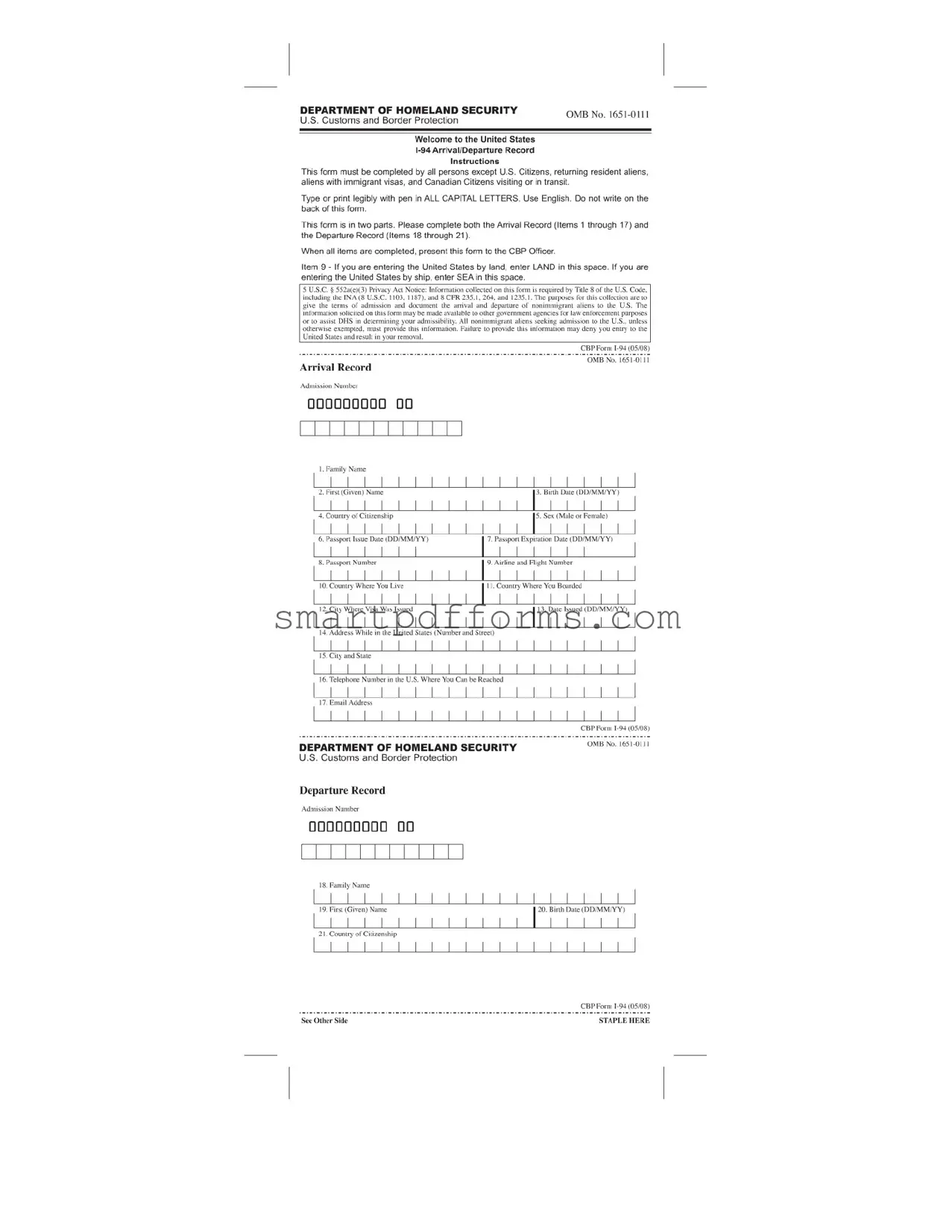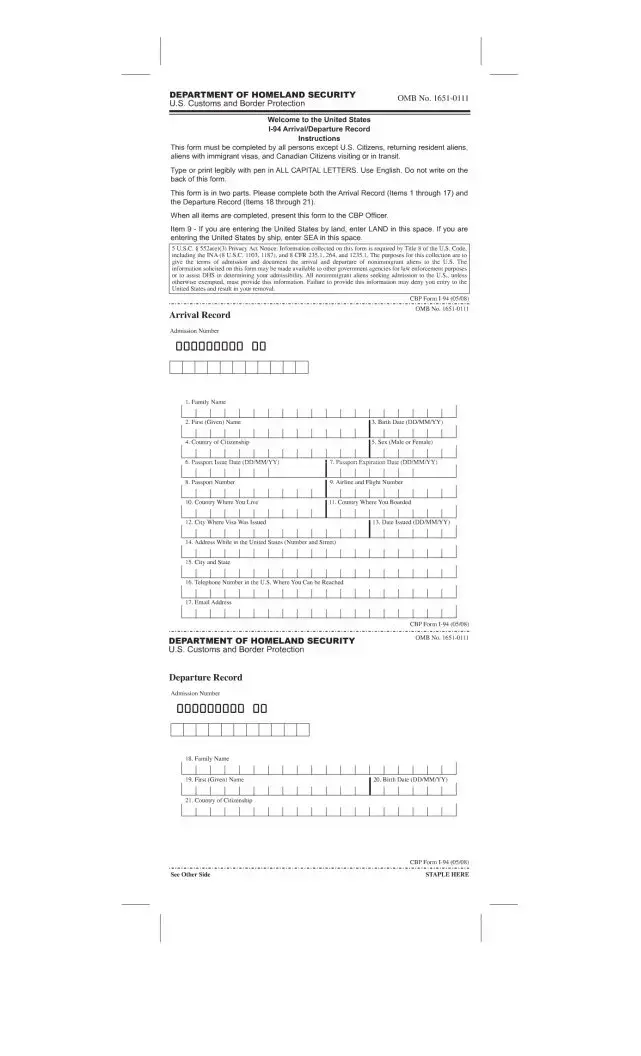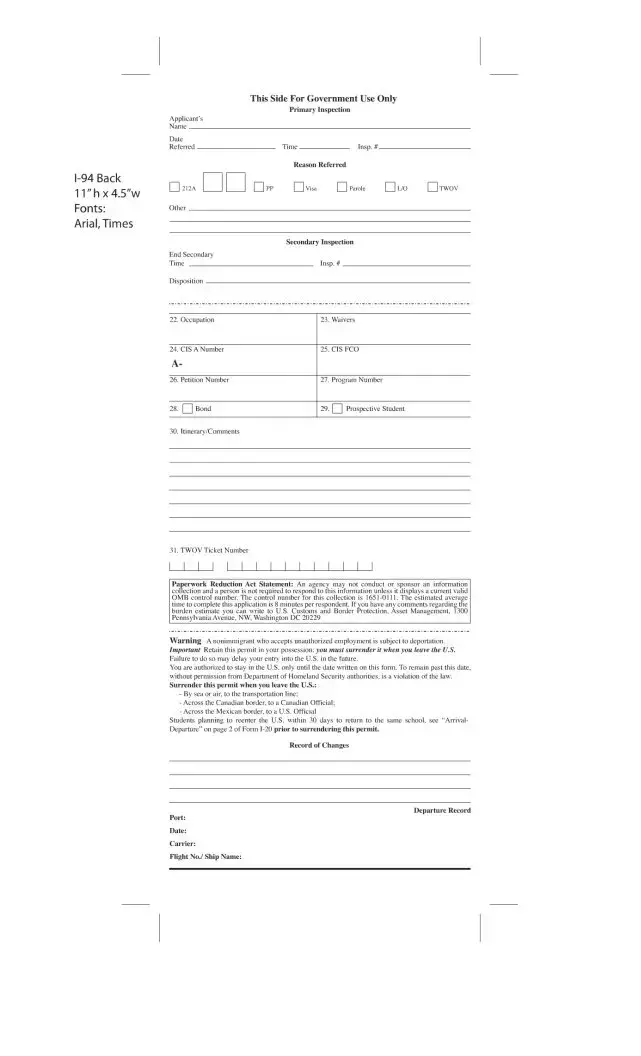Blank Cbp I 94 PDF Template
The CBP Form I-94 is a crucial document administered by the U.S. Customs and Border Protection, designed to record the arrival and departure details of nonimmigrant visitors not exempted by U.S. law. This form is a necessary procedure for all individuals except U.S. Citizens, returning resident aliens, aliens with immigrant visas, and Canadian Citizens who are visiting or in transit. Failure to submit this accurately completed form may result in denial of entry into the United States or removal. Click the button below to ensure you fill out your Form I-94 properly.
Make This Document Now


